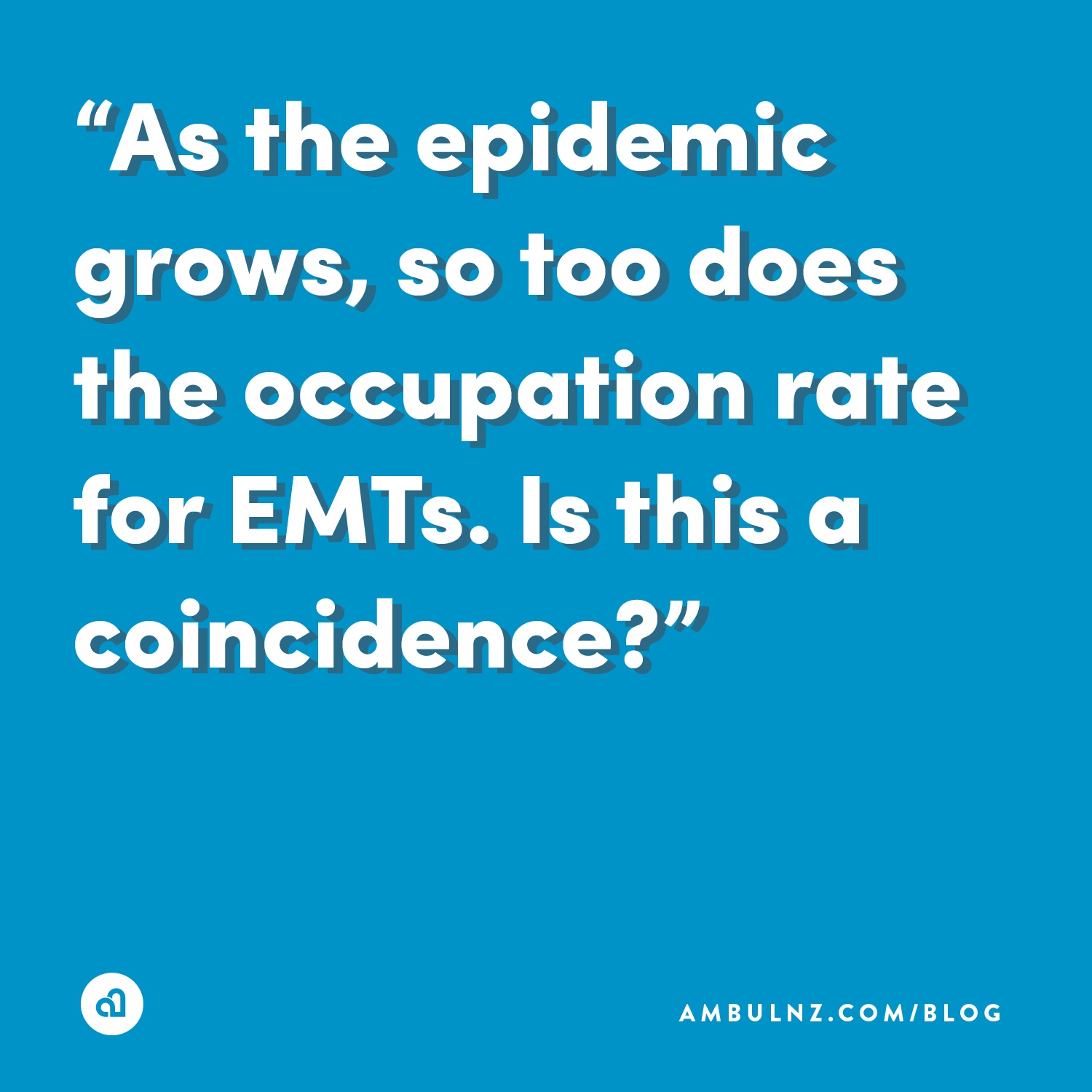By Stan Vashovsky, Ambulnz CEO
In the past decade, the job market and economy has seen tremendous growth, setting record highs. In the past decade, so too has the opioid epidemic, setting record high mortality rates.
Many believe the epidemic started with the introduction to OxyContin (oxycodone) in the late 90s. According the National Library of Medicine National institutes of Health, “When Purdue Pharma introduced OxyContin in 1996, it was aggressively marketed and highly promoted. Sales grew from $48 million in 1996 to almost $1.1 billion in 2000. The high availability of OxyContin correlated with increased abuse, diversion, and addiction, and by 2004 OxyContin had become a leading drug of abuse in the United States.” But aside from the marketing of the drug, it became known within the general population as the “quick-fix” to chronic pain. Having seen first-hand the effects of this drug while on the job, I asked myself, how can physicians not see the addictive nature of this drug. The publication goes on to state, “Purdue trained its sales representatives to carry the message that the risk of addiction was “less than one percent.”
Today, from small towns to booming cities, opioids are affecting people from all walks of life. Even with so much national attention on the epidemic, there is no legislation currently banning opioids, specifically OxyContin. In the State of Florida, Governor Rick Scott has been trying to push legislation to limit the substance, but he has received push back, not only from the drug makers, but from patients who are prescribed the drug. An article published by the Miami News reports Darryl Paulson has been living with a painful condition in which his spinal discs had shifted out of place. He has been an advocate against the bill Scott has been pushing, a bill to limit opioid use to three-days. Paulson says, “Most people don’t realize the kind of burdens and hoops patients have to go through in the state of Florida, we suffer through it because without these medicines, we can’t function.” He goes on to say, “Not everyone who uses opioids is a chronic abuser, this one-size-fits-all policy is grossly unfair to a segment of the population that still suffers from chronic pain.” While I do agree, not everyone abuses these powerful substances, it goes without saying that there needs to be regulation of some kind on these highly addictive opioids.
As the epidemic grows, so too does the occupation rate for EMTs. Is this a coincidence? According to the publication, Unitek EMT, “Employment of Emergency Medical Technicians is expected to grow 15 percent by 2026. According to the Bureau of Labor Statistics, this rate is much faster than the average of all occupations. The need for EMTs and paramedics will rise due to emergencies like car crashes, natural disasters, and violent acts. The aging baby-boomer population will require more emergency medical services as well. Specifically, there will likely be an increase in age-related emergencies, such as strokes and heart attacks. Additionally, a growing number of specialized medical facilities will need more EMTs and paramedics to transport patients. All of these factors will contribute to a greater demand for EMS workers.”
There is no mention of opioid abuse. But, could there be a correlation to the opioid epidemic? While there has not been a conclusive study to show a side-by-side correlation, I did some digging of my own and found some interesting data that might suggest there is. What do you think?
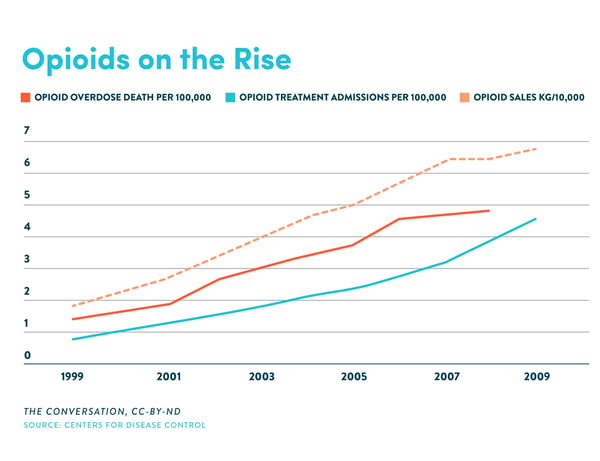
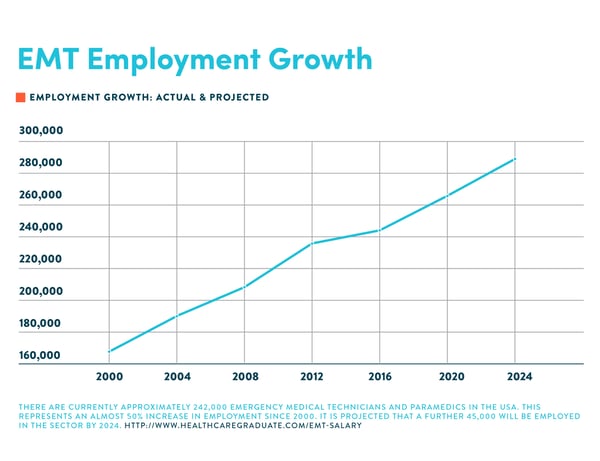
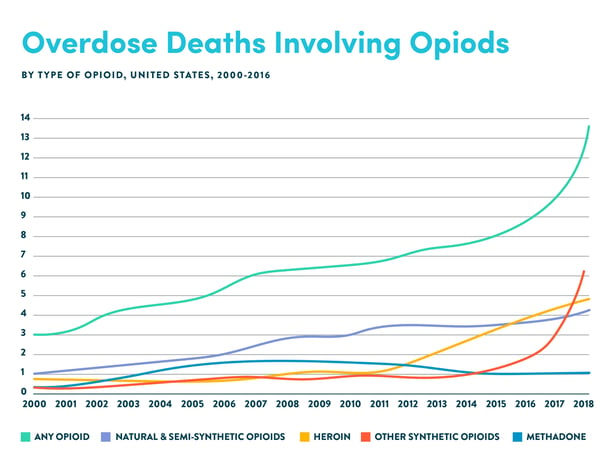
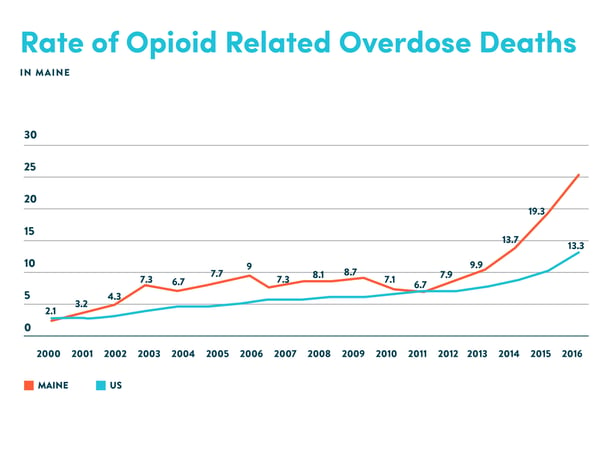
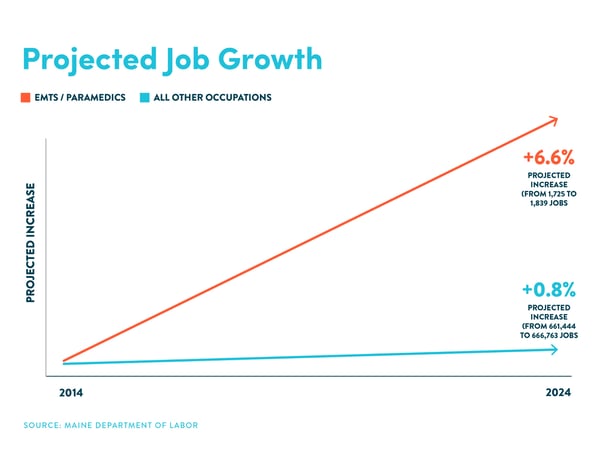
There are currently approximately 242,000 Emergency Medical Technicians and Paramedics in the USA. This represents an almost 50% increase in employment since 2000. It is projected that a further 45,000 will be employed in the sector by 2024. http://www.healthcaregraduate.com/emt-salary





